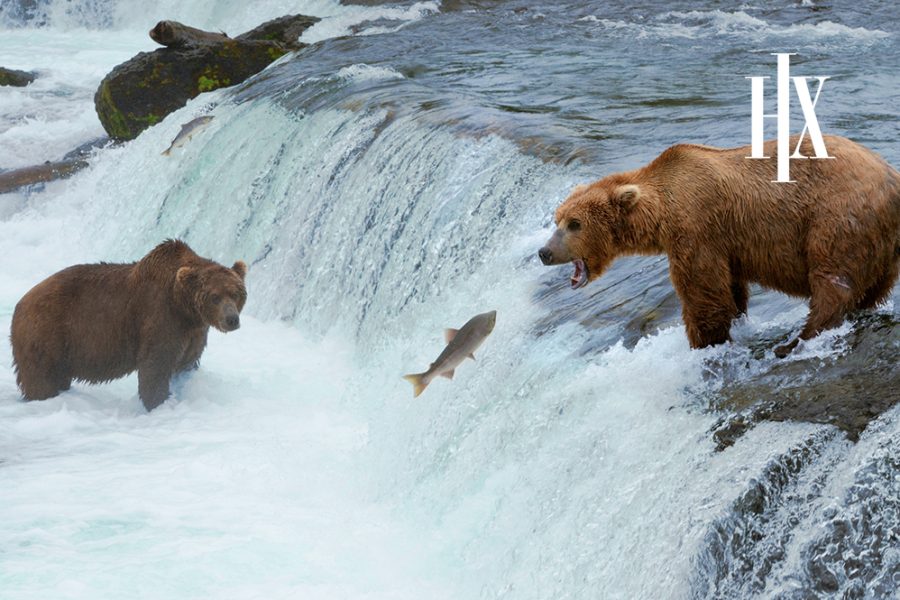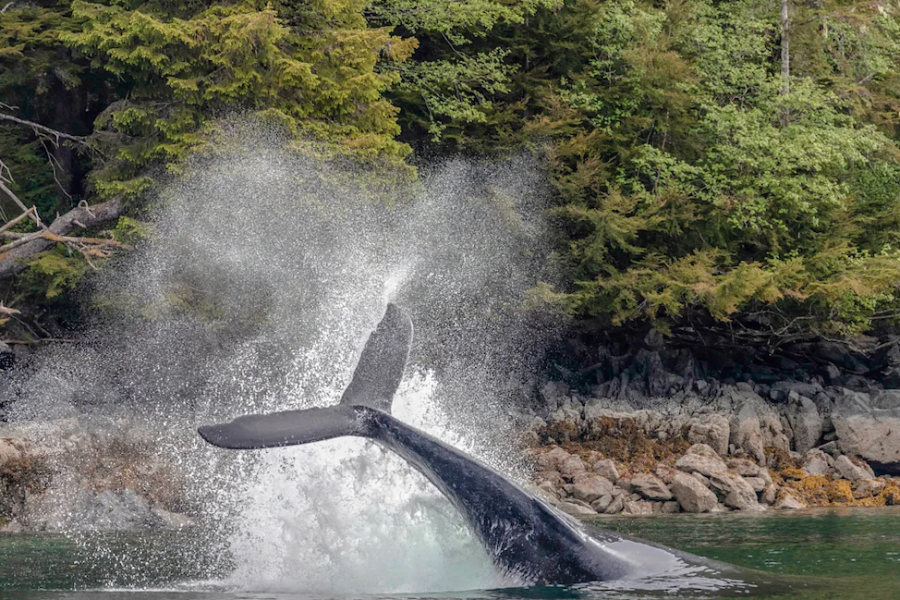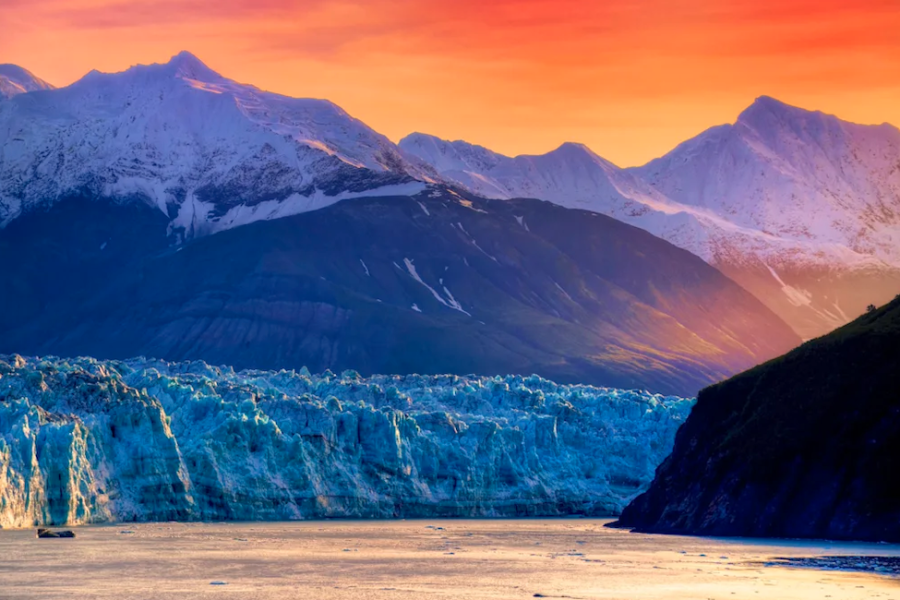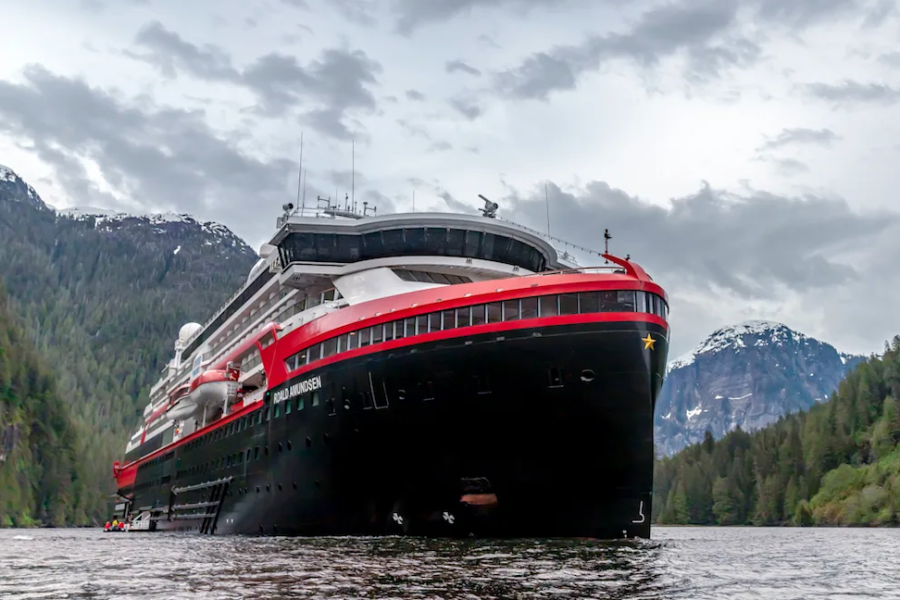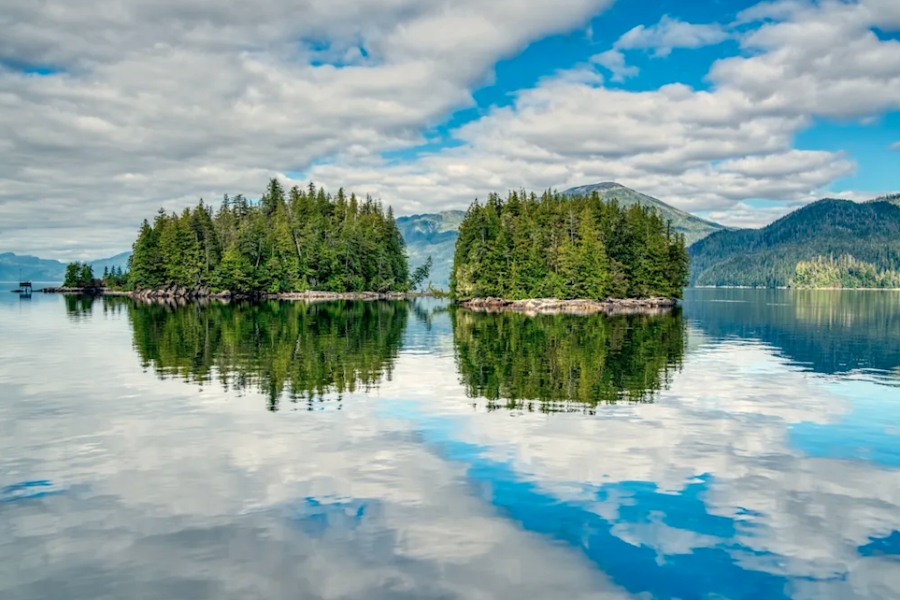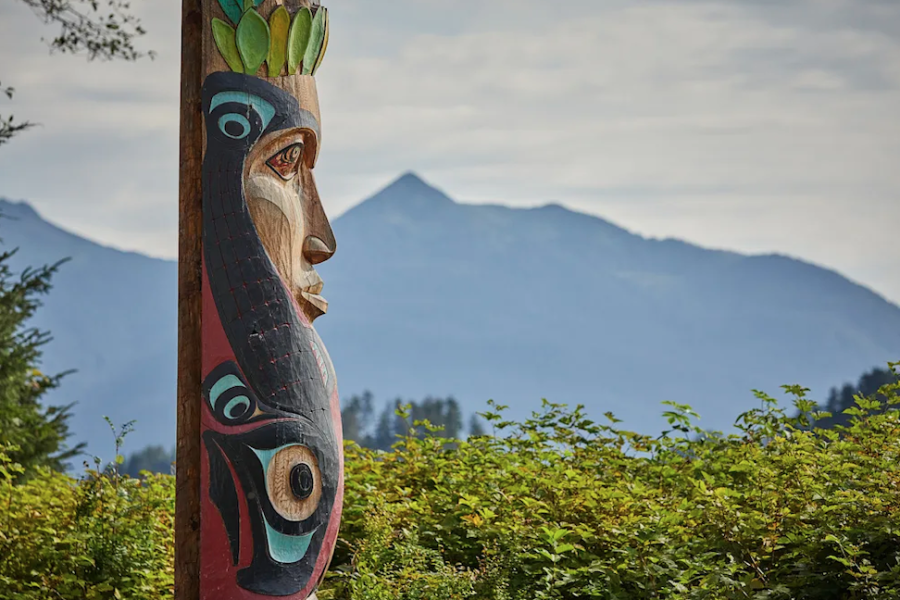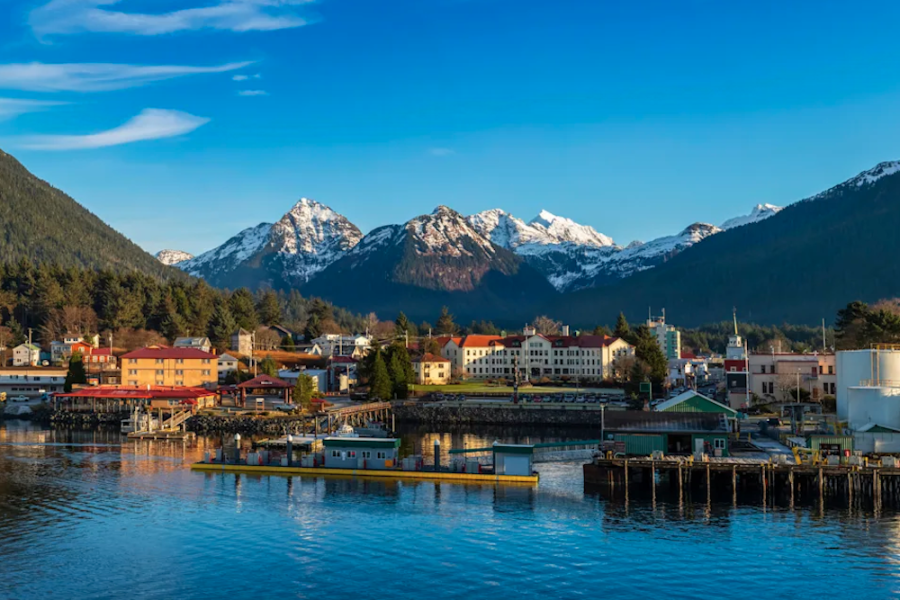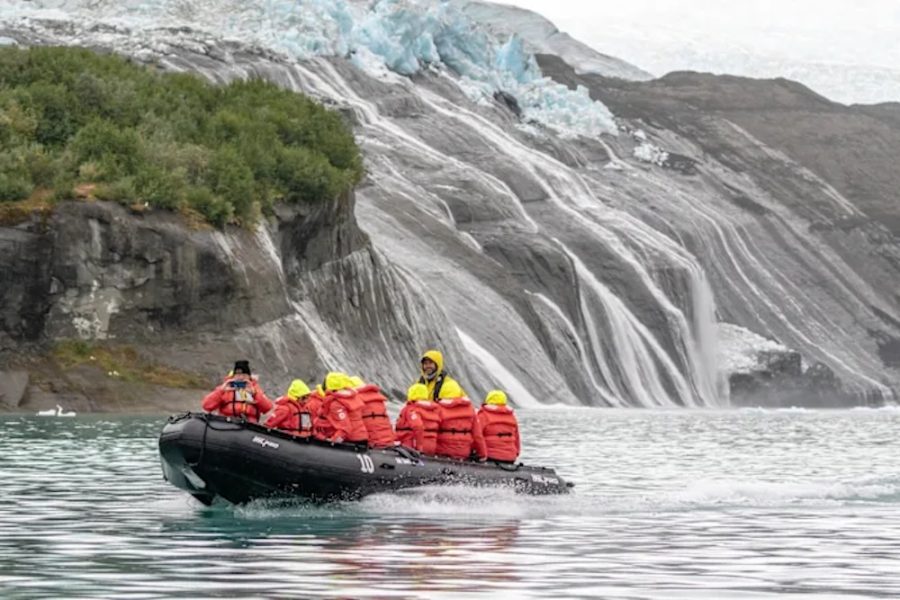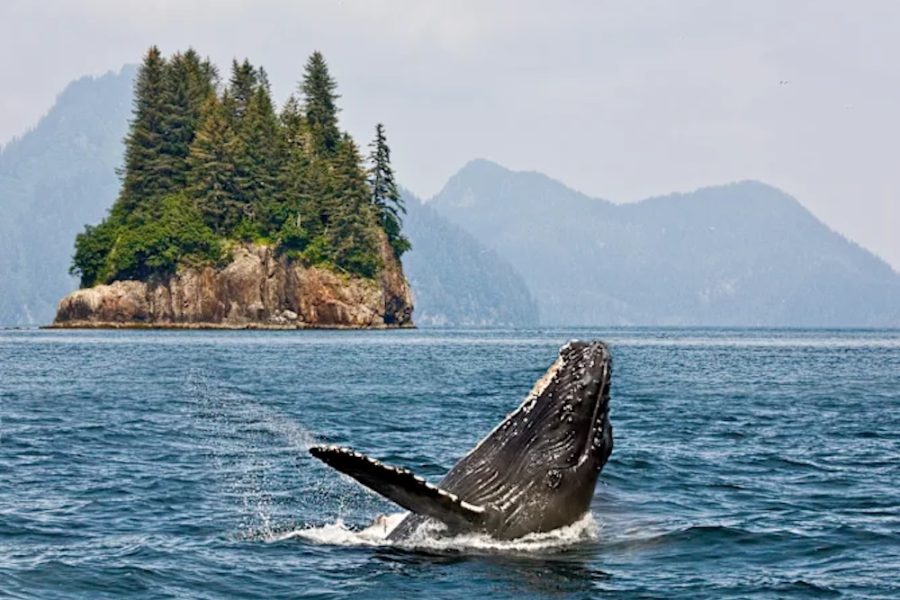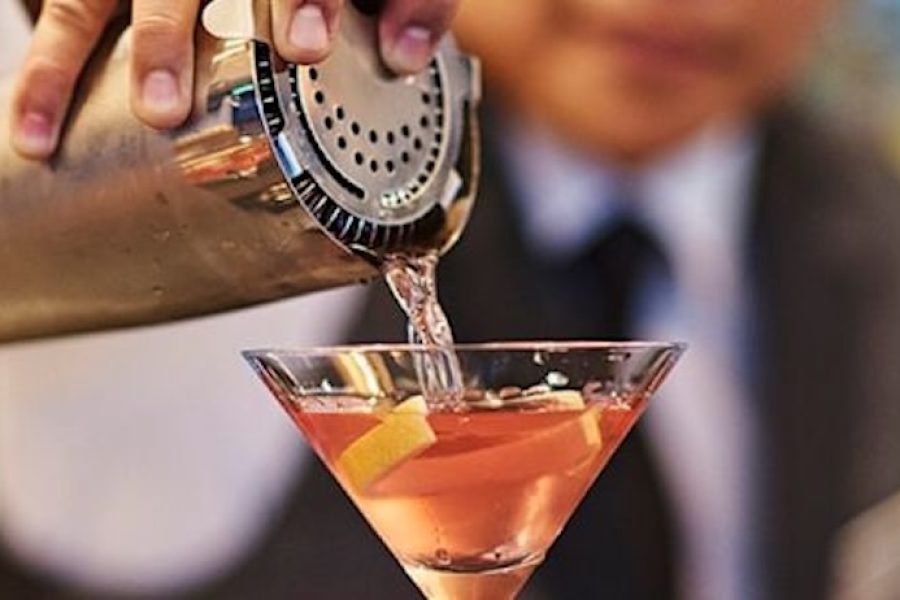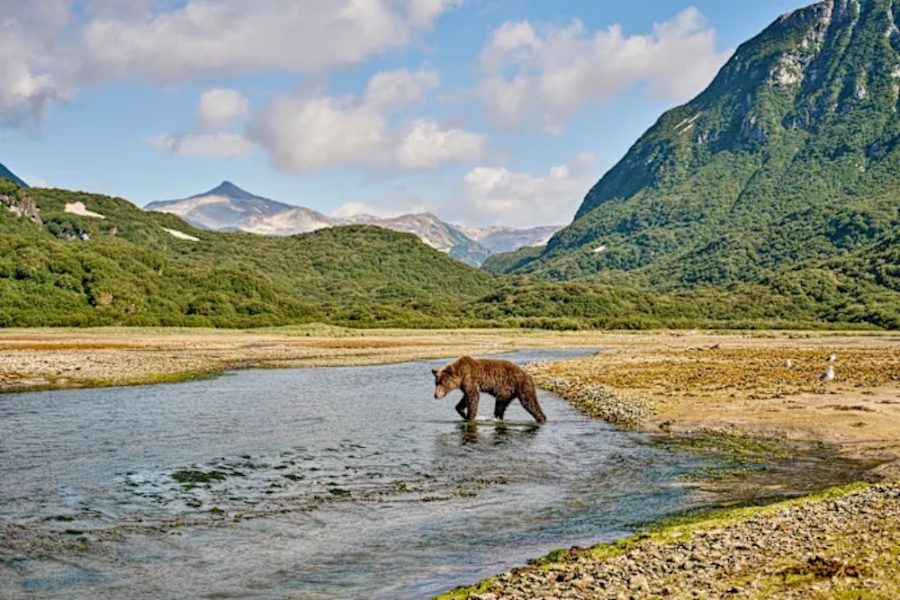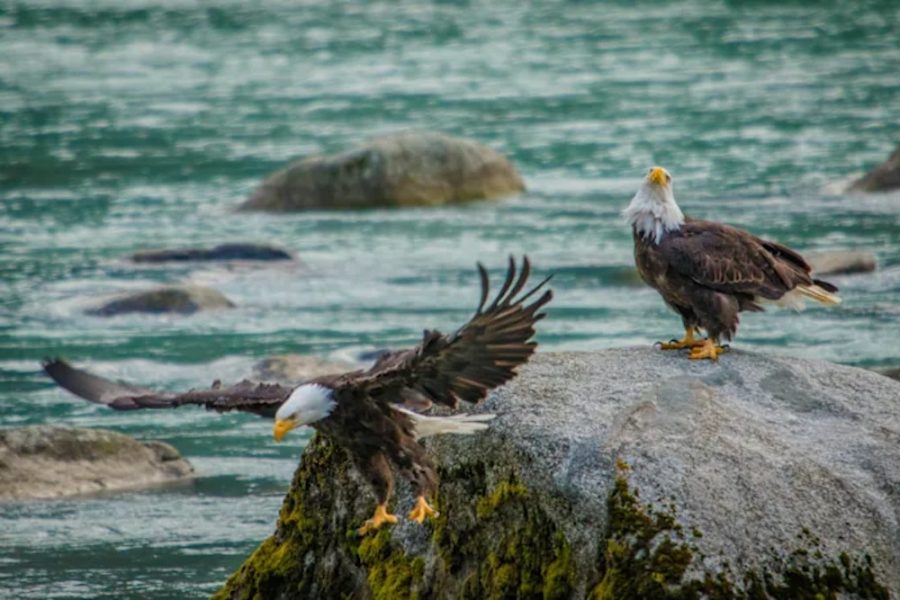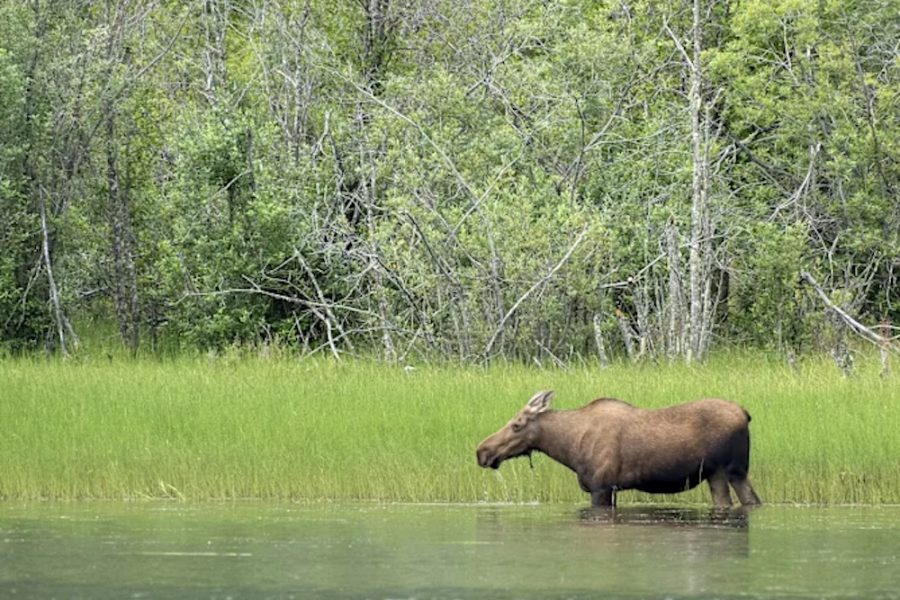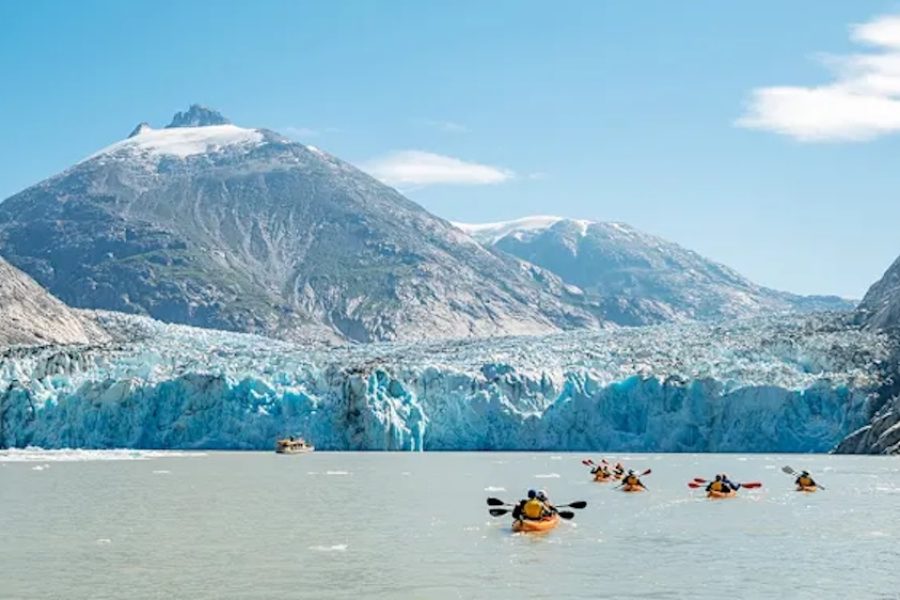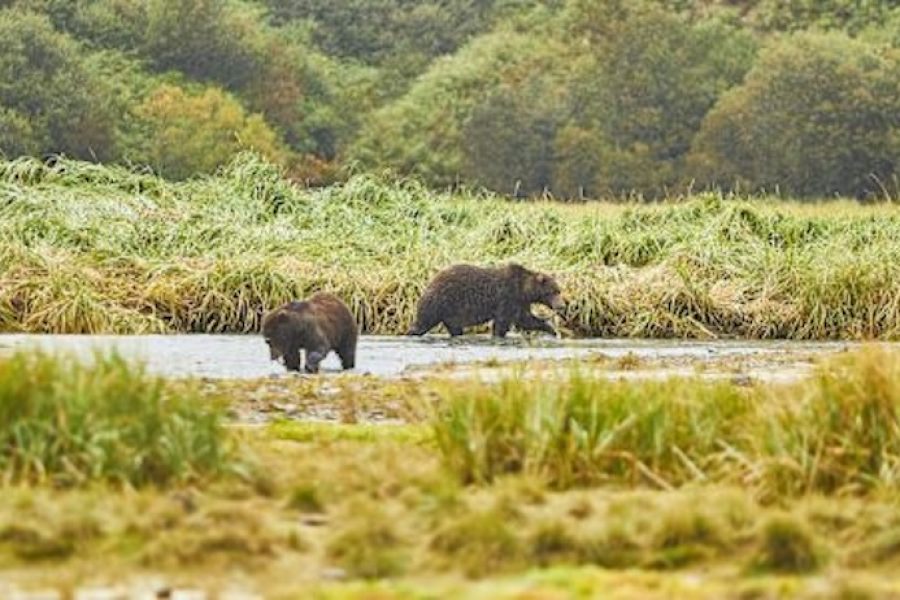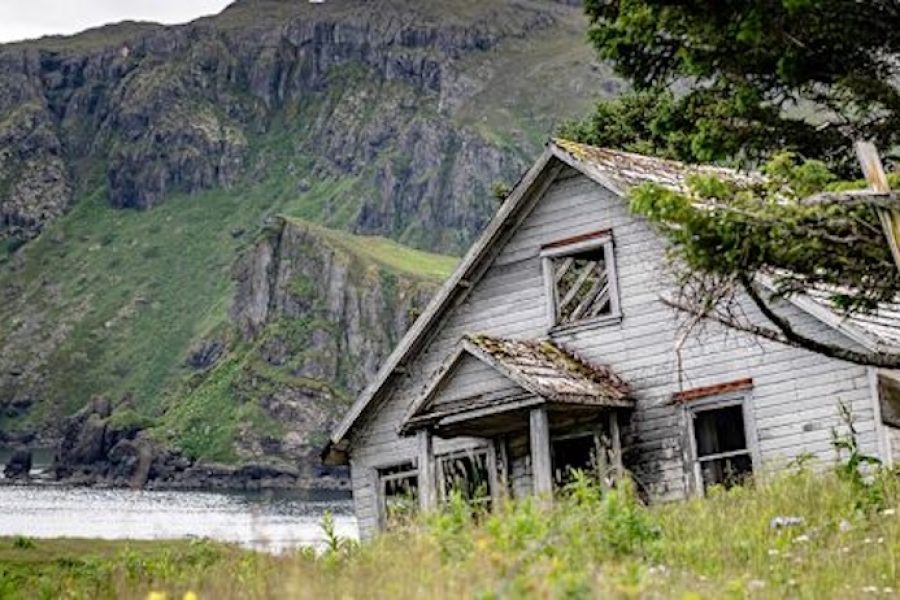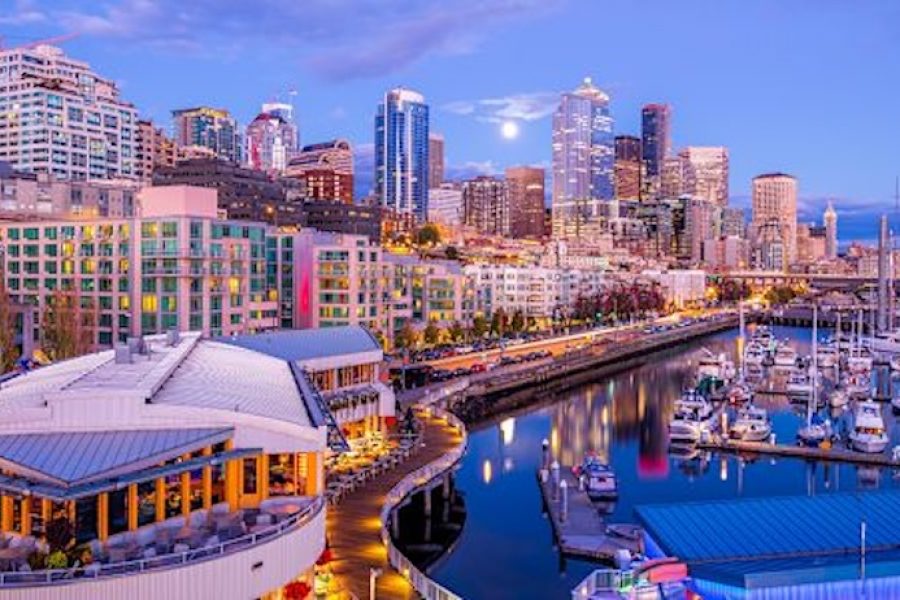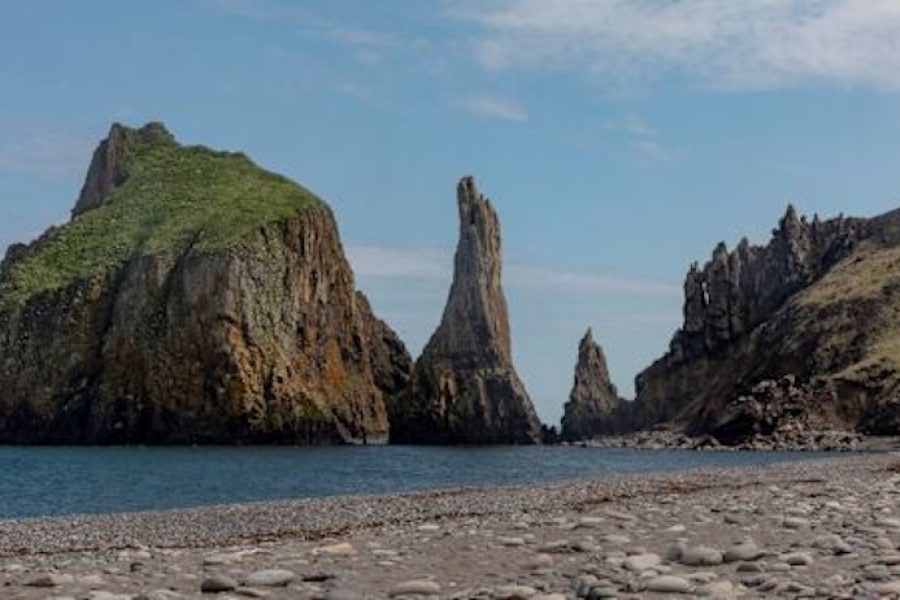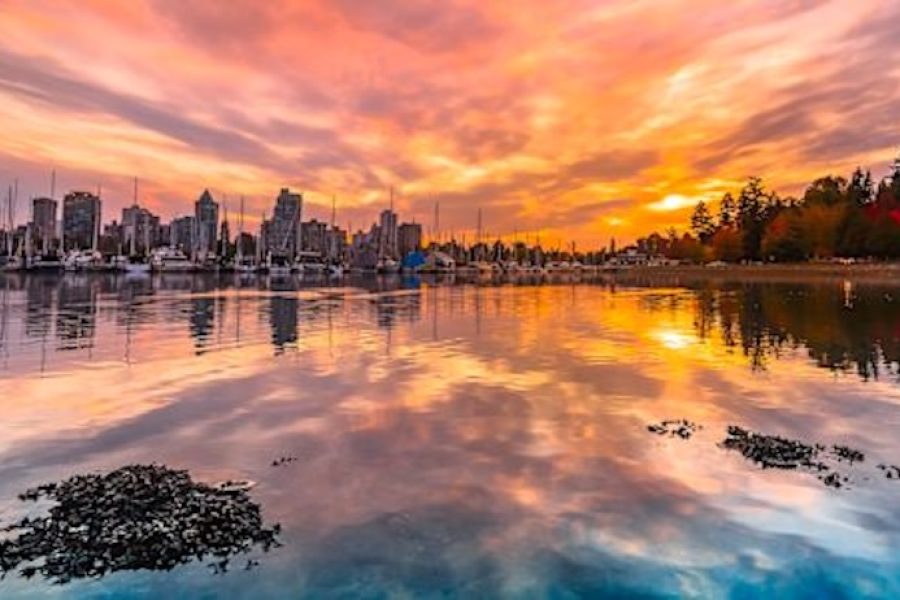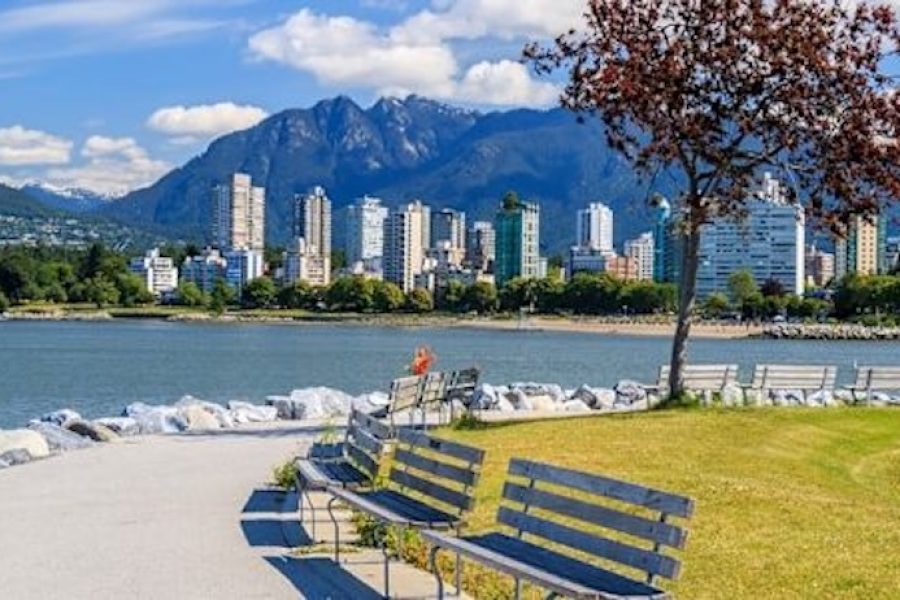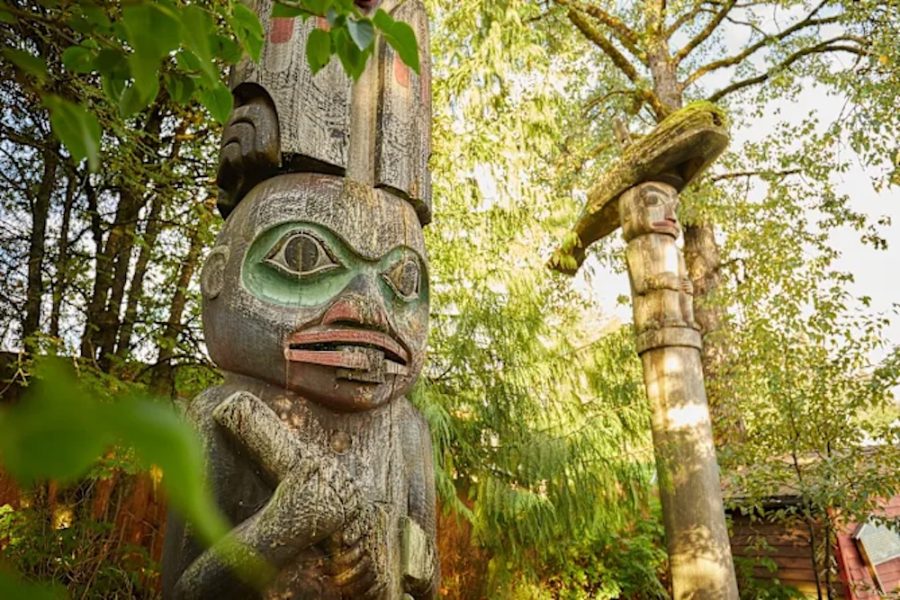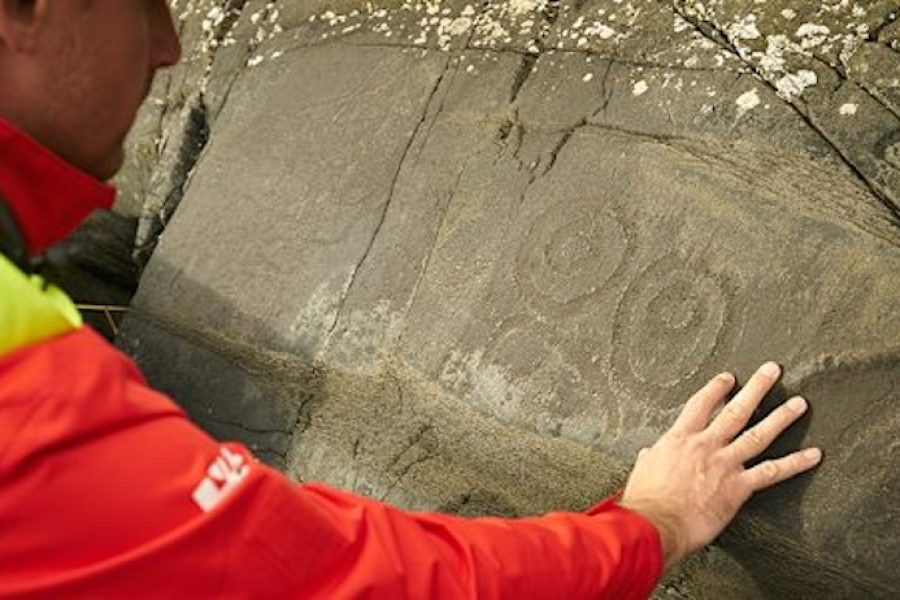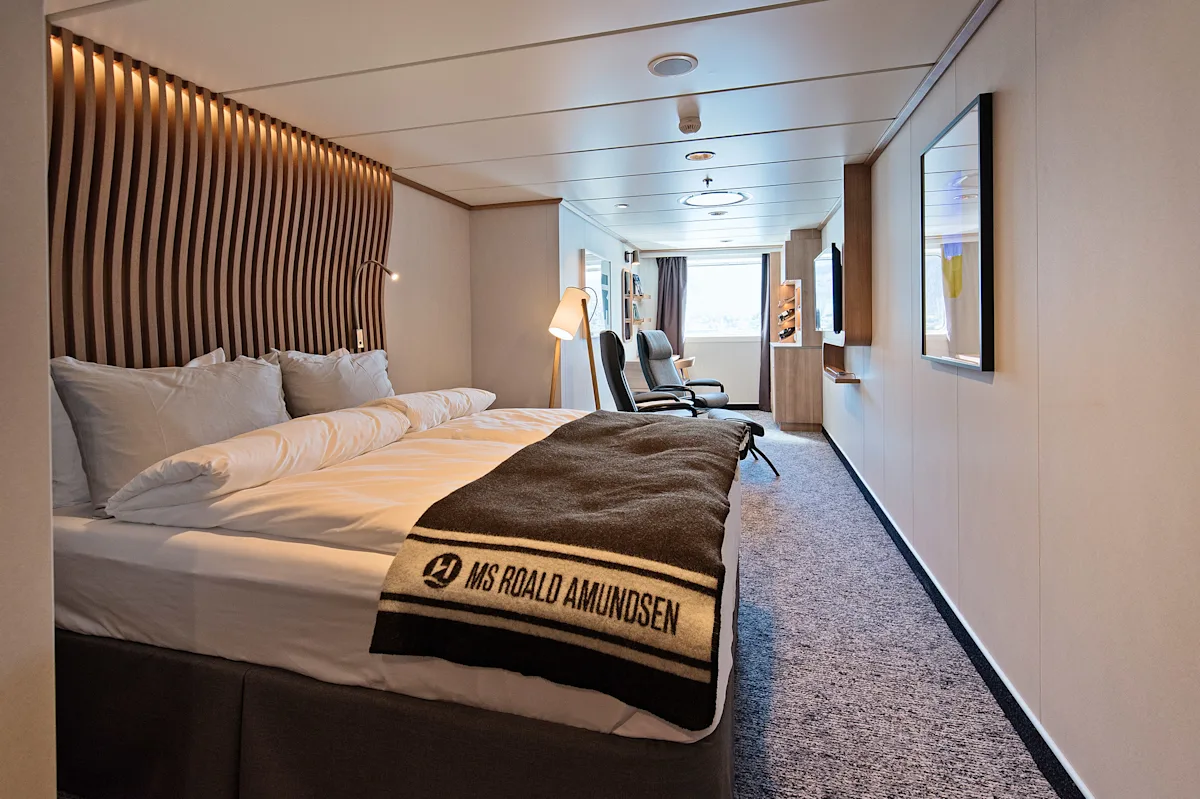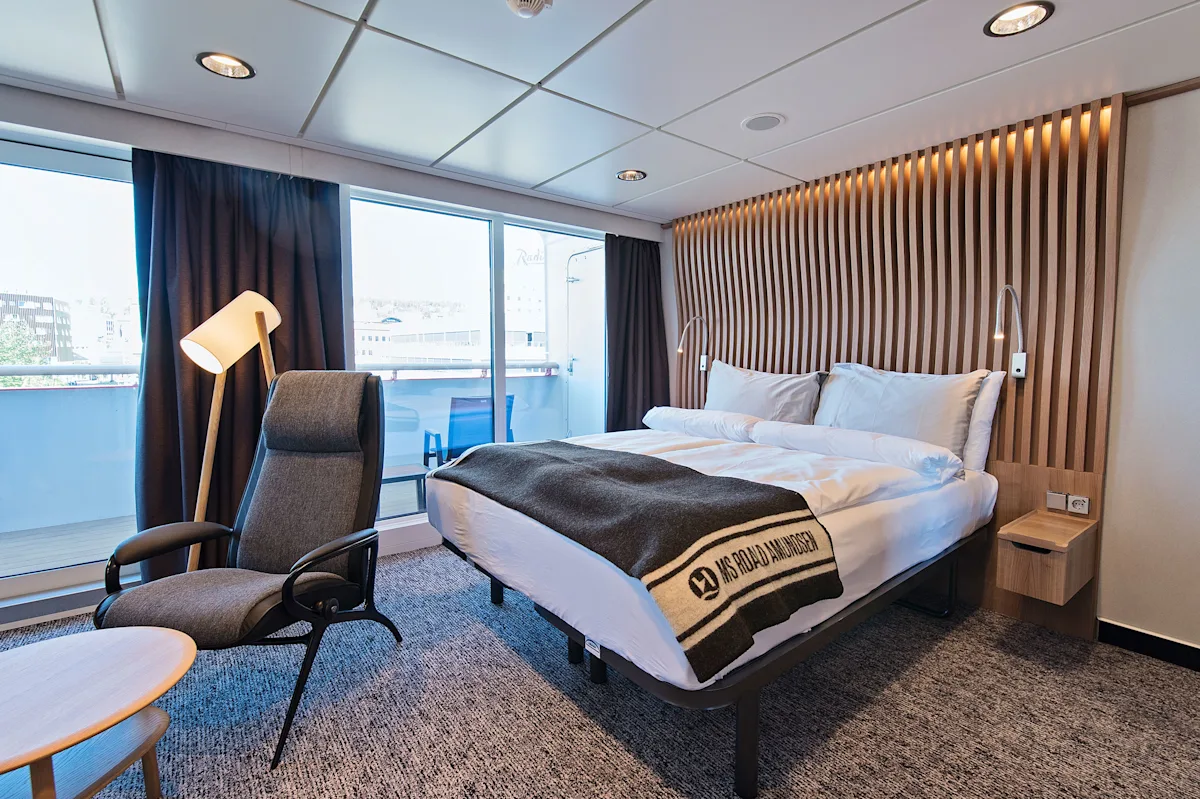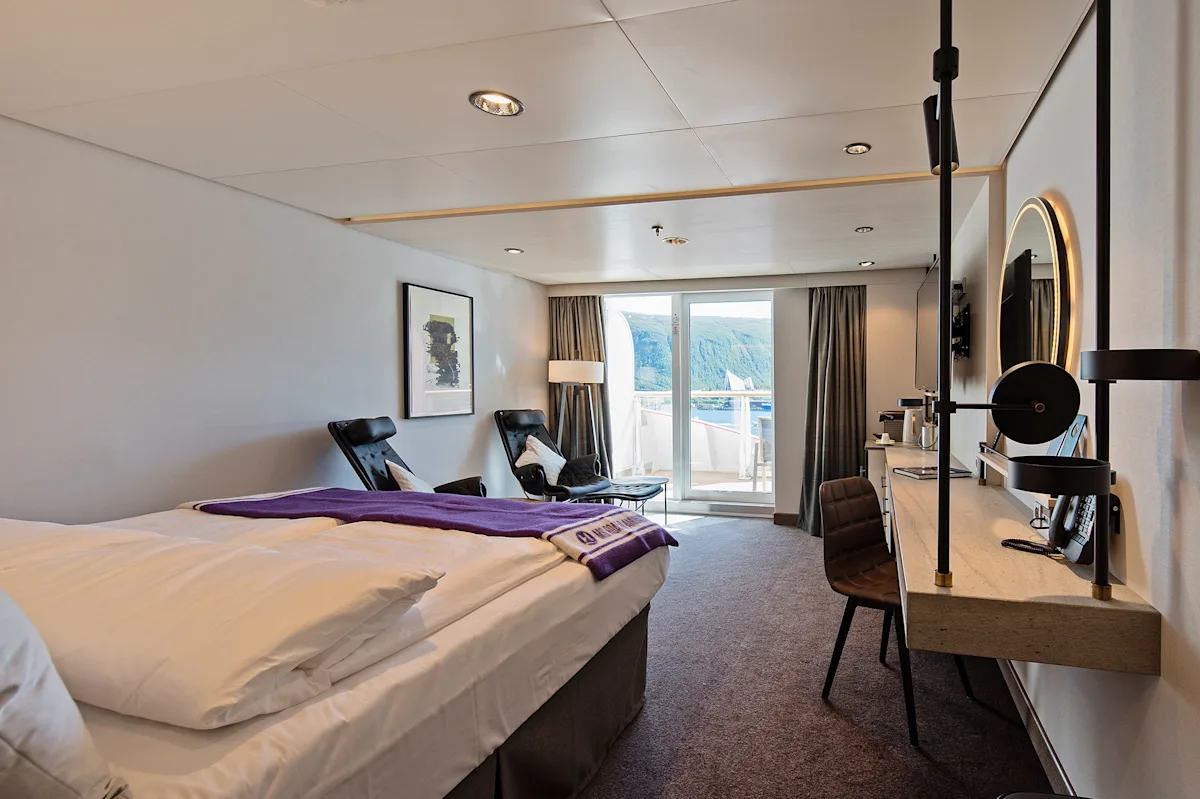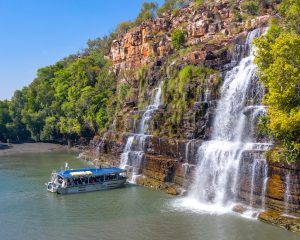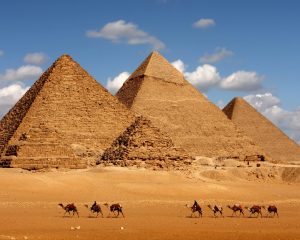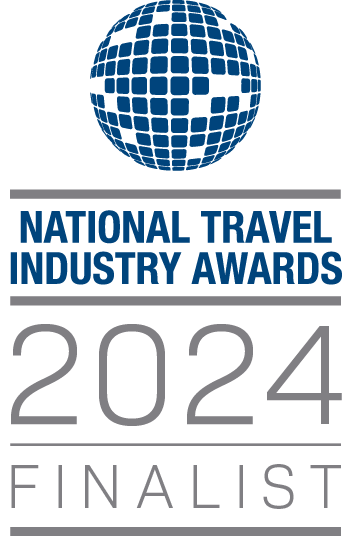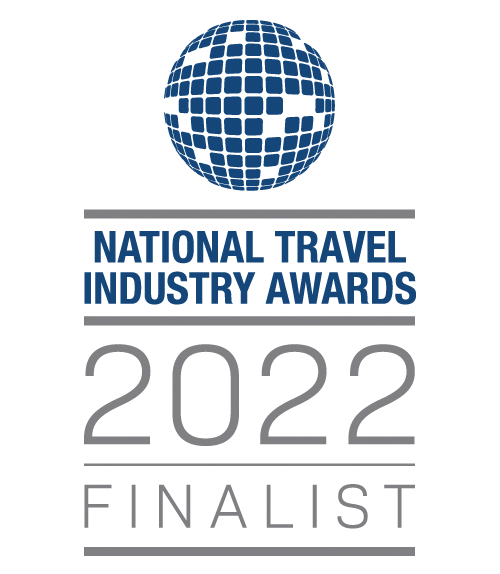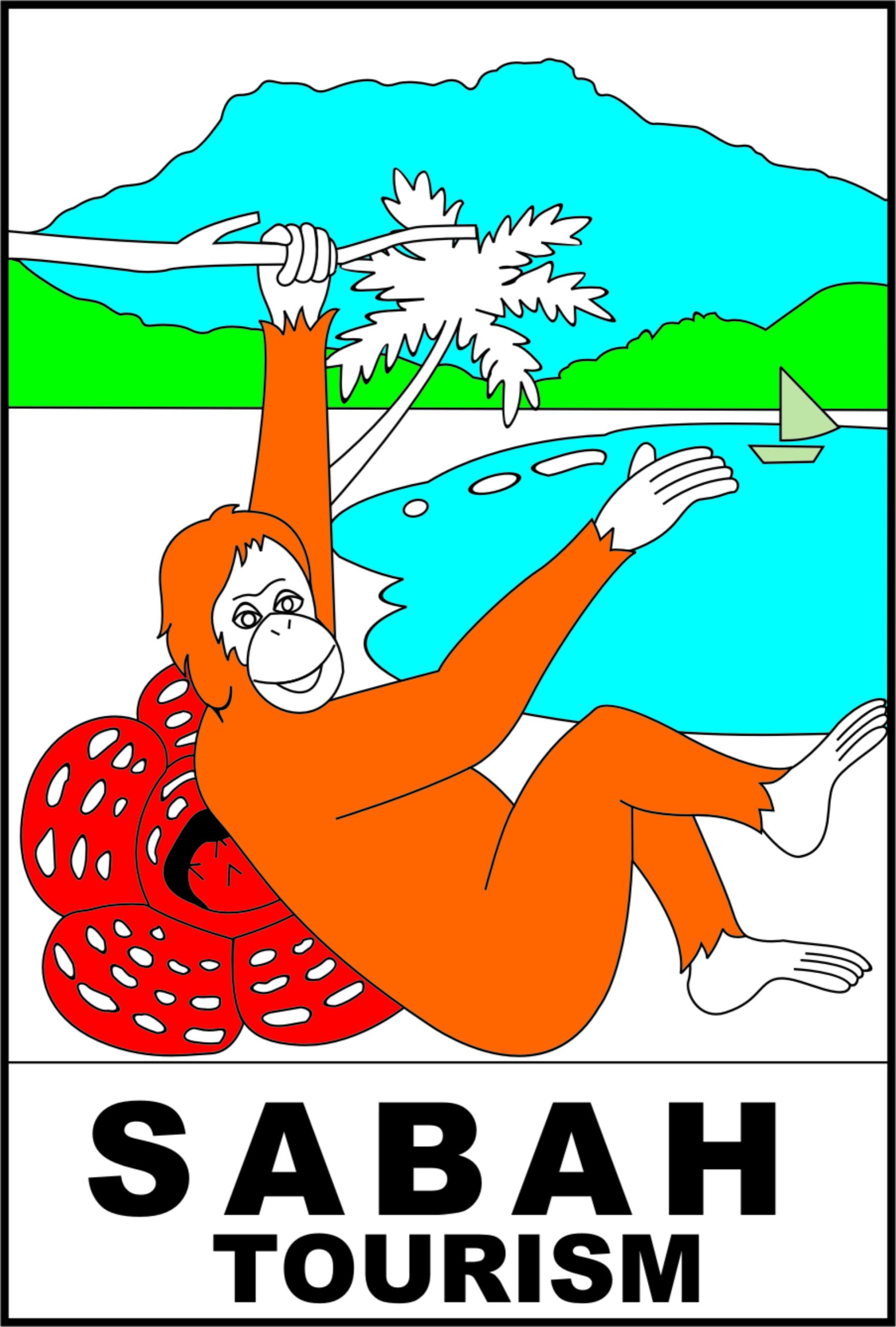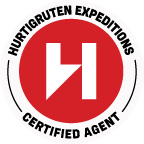Day 1: Arrive Vancouver, Canada
Your Inside Passage Expedition begins with an overnight stay in Vancouver, a vibrant seaport city surrounded by towering mountains and the Pacific Ocean. Known for its breathtaking scenery and diverse culture, Vancouver offers a perfect introduction to your journey.
Explore the city’s unique neighbourhoods, each with its own character. Wander through Gastown, Vancouver’s historic district, where cobblestone streets, charming cafes, and the famous steam clock create a lively atmosphere. For panoramic city views, visit the Vancouver Lookout, a 553-foot observation deck offering stunning 360-degree views of the skyline, mountains, and ocean.
Vancouver is also a food lover’s paradise, with world-class farm-to-table dining and an exciting mix of international cuisine. From fresh seafood to authentic Asian dishes, the city’s culinary scene is not to be missed.
Take this time to relax and settle in before embarking on your Alaskan adventure. Tomorrow, your expedition cruise begins, taking you through some of the world’s most spectacular coastal landscapes.
MEALS: MEALS: Nil
OVERNIGHT: 4-Star Hotel, Vancouver
Day 2: Vancouver – City Tour – Embark Ship
After a delicious breakfast at your hotel, we start the day with a guided city tour of Vancouver, exploring its main highlights and scenic attractions. From historic Gastown to bustling waterfront areas, this tour provides a great introduction to British Columbia’s largest city.
Once the tour is complete, we transfer you to the pier, where your expedition ship, MS Roald Amundsen, awaits. As you step aboard, take some time to settle into your cabin and explore the ship. This state-of-the-art vessel will be your home throughout this incredible journey.
Before we set sail, attend the mandatory safety briefing, where you’ll meet your Expedition Team. These knowledgeable guides and experts will lead you on excursions, landings, and fascinating lectures throughout the voyage.
In the evening, sit down for a welcome dinner, where you can meet fellow travellers and toast the start of your Alaskan adventure. As we leave Vancouver behind and head toward the Inside Passage, your journey into one of the world’s most spectacular wilderness areas has officially begun.
MEALS: MEALS: Breakfast, Dinner
OVERNIGHT: MS Roald Amundsen
Day 3: Canada’s Inside Passage
Today, we sail through Canada’s Inside Passage, a spectacular coastal route that stretches over 930 miles through the North American Pacific Fjordland. This protected waterway is known for its towering mountains, lush forests, and winding fjords, creating a breathtaking backdrop for your journey.
Unlike larger cruise ships that pass through at night, our expedition vessel allows you to experience this incredible scenery in daylight. As we navigate through narrow inlets and hidden channels, you’ll have uninterrupted views of rugged coastlines, remote islands, and pristine wilderness.
Keep your cameras and binoculars ready, as this region is rich in wildlife. The waters are home to humpback, fin, and minke whales, and if we’re lucky, we may even spot a pod of orcas. Look to the skies and treetops for Bald Eagles, while along the shore, you might see black bears, sea otters, and seals.
As we continue our journey, take the time to relax on deck, soak in the tranquillity of the fjords, and enjoy the ever-changing scenery of this remarkable part of the world.
MEALS: Breakfast, Lunch, Dinner
OVERNIGHT: MS Roald Amundsen
Day 4: Misty Fjords
Today, we explore Misty Fjords, a breathtaking wilderness within the Tongass National Forest. This remote and pristine area is a landscape of towering evergreen forests, cascading waterfalls, and snowcapped peaks. The famous naturalist John Muir once described Misty Fjords as one of the most beautiful places he had ever seen—and it’s easy to see why.
If weather conditions allow, you’ll have the opportunity to venture deeper into this untouched paradise. Join the Expedition Team on a small expedition boat tour or, for a more immersive experience, paddle through the fjords by kayak. This will give you an up-close view of the steep cliffs, mist-covered valleys, and reflective waters that make Misty Fjords so special.
This region is teeming with wildlife. Keep an eye out for mountain goats scaling rocky cliffs, black and brown bears roaming the shoreline, and moose moving through the dense forest.
The waters are home to Pacific salmon, otters, Steller sea lions, and harbour seals, while orcas and Dall’s porpoises glide gracefully through the fjords. Above, herons and Bald Eagles soar against the dramatic mountain backdrop.
With its stunning scenery and rich wildlife, Misty Fjords is a highlight of your Inside Passage Expedition.
MEALS: Breakfast, Lunch, Dinner
OVERNIGHT: MS Roald Amundsen
Day 5: Wrangell
Today, we arrive in Wrangell, one of Alaska’s oldest harbour towns, with a rich history and deep Indigenous roots. This small but fascinating community has been governed by three nations—the Tlingit people, the British, and the Russians—before becoming part of the United States.
Just one mile from town, you’ll find Petroglyph Beach, where ancient rock carvings are scattered along the sand. These mysterious symbols, etched into stone by the Tlingit people thousands of years ago, provide a rare glimpse into Alaska’s early history.
To learn more, visit Wrangell’s local museum, where exhibits showcase the town’s diverse past. You can also cross to Shakes Island, home to the Chief Shakes Tribal House and traditional totem poles that share the stories and legends of the Tlingit people.
For those who love the outdoors, Wrangell offers beautiful nature trails. Walk along the mouth of the Stikine River, a famous waterway once used by fur traders and prospectors, or take a hike up Mount Dewey, where you’ll be surrounded by lush rainforest and stunning views.
With its ancient petroglyphs, cultural history, and scenic landscapes, Wrangell is a memorable stop on your Inside Passage Expedition.
MEALS: Breakfast, Lunch, Dinner
OVERNIGHT: MS Roald Amundsen
Day 6: Sitka
Today, we arrive in Sitka, a town rich in history and surrounded by stunning natural beauty. Nestled within the Tongass National Forest, Sitka is accessible only by sea or air, making it one of Alaska’s most remote yet fascinating destinations. As we sail in, step out on deck to admire the breathtaking views of the Sisters Mountains and Mount Edgecumbe, a majestic dormant volcano.
Sitka has been home to the Tlingit people for over 10,000 years. In the early 19th century, Russian explorers settled here, making it the capital of Russian America. After Russia lost the Crimean War, Sitka was sold to the United States in 1867, marking a significant turning point in Alaska’s history. Today, the town reflects a unique blend of Tlingit, Russian, and American influences.
To experience Sitka’s cultural heritage, visit the Russian Orthodox Cathedral and the Russian Bishop’s House, both reminders of its Russian past. At Sitka National Historical Park, you can admire intricately carved Haida and Tlingit totem poles while following a scenic walking trail through the lush coastal forest that leads to the ocean’s edge.
With its stunning scenery and rich cultural diversity, Sitka offers a fascinating glimpse into Alaska’s past and present.
MEALS: Breakfast, Lunch, Dinner
OVERNIGHT: MS Roald Amundsen
Day 7: Icy Bay
Today, we explore the stunning glacial landscapes of Icy Bay, a remote and ever-changing wilderness in the Gulf of Alaska. This breathtaking bay is home to three massive glaciers—Guyot, Yahtse, and Tyndall—which regularly calve into the icy waters, creating a dramatic display of towering icebergs and floating ice.
If weather and conditions allow, you’ll have the opportunity to venture closer to these incredible glaciers. Join the Expedition Team on a small expedition boat tour, or paddle through the icy waters by kayak for a truly immersive experience. Surrounded by sheer ice walls and the crisp Arctic air, you’ll gain a deeper appreciation for this dynamic glacial environment.
Icy Bay is also rich in wildlife, making it a paradise for photographers and nature lovers. Keep an eye out for humpback whales breaching in the distance, orcas gliding through the fjords, and sea otters floating playfully among the ice. Along the shores, you may spot Steller sea lions, harbour seals, and a variety of seabirds perched on the ice.
With its towering glaciers, pristine waters, and incredible wildlife, Icy Bay is one of the most remarkable stops on your Inside Passage Expedition.
MEALS: Breakfast, Lunch, Dinner
OVERNIGHT: MS Roald Amundsen
Day 8: Gulf of Alaska
Today, we continue our journey across the vast and scenic Gulf of Alaska. This is the perfect opportunity to relax, unwind, and enjoy the many onboard facilities as we sail through open waters surrounded by breathtaking landscapes.
Take advantage of the ship’s wellness amenities, including the infinity pool, hot tubs, and sauna, or keep active with a run on the deck or a workout in the gym. For those looking to truly unwind, a massage at the spa offers the ultimate relaxation.
For a more educational experience, visit the Science Centre, where the Expedition Team hosts engaging lectures and discussions on Alaska’s wildlife, geology, glaciology, history, and Indigenous cultures. This is a great chance to deepen your understanding of the fascinating places we’ve explored and those still to come.
Birdwatchers should keep an eye on the skies, as the Gulf of Alaska is home to three species of North Pacific albatross. The Laysan and Black-footed Albatross are often seen, while the Short-tailed Albatross is rarer—but spotting one is an exciting highlight for nature lovers.
Whether you choose to relax, learn, or simply soak in the scenery, today is a perfect day to enjoy life at sea.
MEALS: Breakfast, Lunch, Dinner
OVERNIGHT: MS Roald Amundsen
Day 9: Kodiak Island
Today, we arrive at Kodiak Island, known as the ‘Emerald Isle’ due to its lush spruce forests and rolling grasslands. As the second-largest island in the United States, Kodiak is a remote and breathtakingly beautiful wilderness.
This island is also home to the Kodiak brown bear, one of the largest bear species in the world. Around 3,500 of these magnificent creatures roam the Kodiak National Wildlife Refuge, which covers two-thirds of the island. This protected area provides a safe and thriving habitat for the bears, along with bald eagles, foxes, and rich marine life.
From the safety of our small expedition boats, we’ll search for these powerful yet graceful animals in their natural habitat. With luck, we may observe them foraging for food, fishing in the rivers, or roaming the shoreline. This experience offers a rare and intimate glimpse into the daily lives of these iconic bears, set against the rugged beauty of Alaska’s remote wilderness.
Kodiak Island is a must-visit destination for wildlife enthusiasts, offering incredible photography opportunities and unforgettable encounters with Alaska’s most famous predator.
MEALS: Breakfast, Lunch, Dinner
OVERNIGHT: MS Roald Amundsen
Day 10: Katmai National Park
Today, we explore Katmai National Park, a vast wilderness spanning four million acres. Known for its stunning landscapes and diverse wildlife, Katmai is home to over a dozen active volcanoes and the largest concentration of protected brown bears in the world, with more than 2,000 bears roaming its remote terrain.
With the guidance of an experienced bear guard, we will safely observe these incredible creatures from the deck of our ship or aboard small expedition boats. Depending on conditions, we may explore Geographic Harbor, Kinak Bay, or Kukak Bay—all prime locations for spotting brown bears in their natural habitat.
Watch as these massive yet agile animals go about their daily activities. We may see them foraging for berries, digging for clams along the shore, or catching salmon in the rushing streams. Seeing a wild brown bear in action is an unforgettable experience, offering a rare glimpse into the natural rhythms of Alaska’s untamed wilderness.
With its breathtaking scenery, volcanic landscapes, and incredible wildlife encounters, Katmai National Park is a highlight of your expedition and a once-in-a-lifetime opportunity to witness Alaska’s iconic brown bears up close.
MEALS: Breakfast, Lunch, Dinner
OVERNIGHT: MS Roald Amundsen
Day 11: Alaskan Peninsula
Today, we explore the wild and rugged landscapes of the Alaska Peninsula, a vast and untamed region where towering mountains meet secluded bays and untouched coastline. This remote area is a haven for wildlife, offering a chance to experience Alaska’s raw natural beauty up close.
Join your Expedition Team as we navigate through hidden bays and narrow inlets, where few travellers have ventured before. Keep a lookout for Alaska’s iconic wildlife, as this region is home to brown bears foraging along the shores, Bald Eagles soaring overhead, and sea otters floating in the calm waters. If we’re lucky, we may also spot humpback whales gliding through the waves, a truly breathtaking sight.
Beyond its abundant wildlife, the Alaska Peninsula offers a fascinating geological history. The land here has been shaped by glacial movements, volcanic activity, and shifting tectonic forces, creating the dramatic landscapes we see today. Your Expedition Team will share insights into the natural processes that have sculpted this remote and rugged environment.
With its untouched wilderness, stunning coastal scenery, and rich wildlife, the Alaska Peninsula is a true highlight of your expedition.
MEALS: Breakfast, Lunch, Dinner
OVERNIGHT: MS Roald Amundsen
Day 12: Unga
Today, we visit Unga Village, a deserted yet picturesque settlement on the southern end of Unga Island. Once home to a small community, this now-abandoned town offers a fascinating glimpse into Alaska’s past, where nature has slowly reclaimed the land.
Originally settled by the Aleut people in 1833, Unga Village was once a thriving fishing community. However, by 1969, the town was abandoned as subsistence fishing was no longer enough to support the residents. Today, all that remains are weathered wooden buildings, standing as silent reminders of the people who once called this place home.
Despite its abandonment, Unga Village has a haunting beauty. A blanket of wildflowers, including pink lousewort and vibrant fireweed, now covers the land, creating a stunning contrast against the aged structures. The peaceful silence of the village, combined with the surrounding rugged coastline and untouched wilderness, makes for a truly unique and memorable experience.
If conditions allow, we will explore the village on foot, arriving by small expedition boats. As you wander through this eerie yet beautiful landscape, take in the sense of history and the power of nature’s reclamation.
MEALS: Breakfast, Lunch, Dinner
OVERNIGHT: MS Roald Amundsen
Day 13: Dutch Harbor
Today, we arrive at Dutch Harbor, America’s largest fishing port and a place rich in history, culture, and wildlife. As we sail towards this remote and fascinating town, you may catch a glimpse of Mount Makushin, a towering 6,000-foot volcano that occasionally releases steam into the sky.
Dutch Harbor is part of the Aleutian Islands, home to the Unungan (Aleut) people for thousands of years. At the Museum of the Aleutians, you’ll learn about their resilience, traditions, and connection to the land and sea. You can also visit the Russian Orthodox Cathedral, a reminder of the area’s Russian colonial past.
For those interested in wartime history, Dutch Harbor was the site of a 1942 World War II battle, when Japanese forces launched an air attack on the Aleutian Islands. A visit to the WWII museum provides insight into this often-overlooked chapter of history.
Wildlife thrives in and around Dutch Harbor. Look to the sky for Bald Eagles and puffins, while on land, you may see foxes, lemmings, and even wild horses. The surrounding waters are home to whales, sea lions, and playful porpoises. Dutch Harbor is also well-known as the setting for the TV series The Deadliest Catch, which follows crab fishermen battling extreme conditions.
With its mix of history, culture, and natural beauty, Dutch Harbor is a truly unique stop on your expedition.
MEALS: Breakfast, Lunch, Dinner
OVERNIGHT: MS Roald Amundsen
Day 14: At Sea
Today, we continue our journey south through the Bering Sea, leaving the Aleutian Islands behind as we make our way towards our next destination. This is the perfect day to relax, reflect, and enjoy the many facilities onboard.
The Expedition Team will host engaging lectures and discussions, providing fascinating insights into the wildlife, geology, and history of Alaska. This is a great chance to ask questions, learn more about the places we’ve explored, and prepare for the adventures ahead.
For wildlife enthusiasts, keep your binoculars and cameras ready. The open sea is home to puffins, auklets, and murrelets, and if you’re lucky, you may even spot the rare Red-legged Kittiwake, a seabird found only in this part of the world.
If you prefer to unwind, spend time in the Explorer Lounge & Bar, where you can enjoy a drink while admiring the breathtaking ocean views. Alternatively, take a dip in the infinity pool, soak in the hot tubs, or simply find a quiet spot on deck to watch the world go by.
Whether you choose to relax or learn, today is a perfect opportunity to soak in the beauty of the open ocean before our next adventure.
MEALS: Breakfast, Lunch, Dinner
OVERNIGHT: MS Roald Amundsen
Day 15: St Paul Island
Today, we visit St Paul Island, the largest of the Pribilof Islands and home to the biggest Unangan (Aleut) community in the United States, with around 480 residents. This windswept and remote island offers a fascinating look at the Unangan people’s history, culture, and deep connection to the land and sea.
One of the most interesting historical sites on the island is the remains of barabaras—traditional Unangan dwellings built partially underground to protect against the harsh Bering Sea winds. These structures offer a glimpse into how Indigenous people adapted to life in this isolated environment for thousands of years.
St Paul is also a birdwatcher’s paradise, designated as an Important Bird Area (IBA). Around 300 species of migratory birds stop here during their long journeys. Look out for Horned and Tufted Puffins, the rare Pribilof Sandpiper, and the elusive Red-legged Kittiwake, a seabird found in only a few places in the world.
The island’s rugged shores are home to one of the world’s largest populations of northern fur seals, with nearly half of all fur seals on Earth living here. Watching these charming animals waddle along the beach or play in the surf is a true wildlife highlight of your expedition.
With its rich Indigenous history and incredible wildlife, St Paul is a remarkable stop on your journey.
MEALS: Breakfast, Lunch, Dinner
OVERNIGHT: MS Roald Amundsen
Day 16: St Matthew Island
Today, we explore St Matthew Island, one of the most remote and uninhabited islands in the Bering Sea. Located 200 miles from the nearest village, this isolated and untamed wilderness is part of the Alaska Maritime National Wildlife Refuge.
Despite its harsh environment, St Matthew has a haunting beauty, with black sand beaches, rugged cliffs, and rolling tundra covered in wildflowers. Scattered among the landscape are the remains of abandoned buildings, silent reminders of past attempts to settle here—all of which ultimately failed due to the island’s extreme isolation.
Today, the only full-time residents of St Matthew are seabirds. Thousands of puffins, murres, and cormorants make their home on the island, filling the skies with their calls. If we’re lucky, we may spot the rare McKay’s Bunting, a small songbird that breeds almost exclusively on St Matthew Island.
Another unique inhabitant of the island is the singing vole—a small rodent known for its distinctive, high-pitched vocalisations. Keep an ear out as we explore, and you may hear its unusual call echoing across the tundra.
With its untouched landscapes, abundant birdlife, and fascinating history, St Matthew Island is a truly special stop on your expedition.
MEALS: Breakfast, Lunch, Dinner
OVERNIGHT: MS Roald Amundsen
Day 17: Bering Sea
Today, we cruise across the Bering Sea, a vast stretch of water that separates Russia to the west and the United States to the east. This remote and rugged region is teeming with wildlife, offering one last chance to spot incredible marine life and seabirds as we make our way toward the final leg of our journey.
Keep your eyes on the water—you may see humpback whales surfacing, or catch glimpses of seabirds soaring overhead, including puffins, kittiwakes, and shearwaters. This is a perfect opportunity to relax on deck, breathe in the fresh ocean air, and take in the sweeping views of the open sea.
As this is your final full day at sea, take the time to enjoy the ship’s facilities and reflect on your expedition. The Expedition Team will host a recap session, highlighting the unforgettable experiences, wildlife encounters, and fascinating destinations you’ve explored throughout the journey.
If you’re eager to learn more, visit the Science Centre, where you can review your photos, discuss your discoveries with fellow travellers, or deepen your knowledge about the Arctic and its wildlife.
With a day of relaxation, reflection, and final wildlife spotting, your Alaskan expedition is coming to a memorable close.
MEALS: Breakfast, Lunch, Dinner
OVERNIGHT: MS Roald Amundsen
Day 18: Nome – Disembark Ship ~ Seattle
Today, we arrive in Nome, a historic Alaskan town with a fascinating Gold Rush past. In 1898, prospectors flocked here in search of fortune, and even today, some people still pan for gold in the area.
As you explore Nome, you’ll see reminders of its gold-mining history everywhere. Scattered throughout the landscape are abandoned dredges, old steam engines, and railroad tracks—all relics of a time when Nome was bustling with hopeful fortune seekers. These remnants give the town a unique and nostalgic atmosphere, making it a truly special stop on our journey.
Nome also holds an important place in polar exploration history. This town was the final stop for three of Roald Amundsen’s great Arctic expeditions, including his 1926 attempt to reach the North Pole by air. Standing in this remote and rugged town, it’s easy to imagine the challenges and triumphs of those early explorers.
After taking in the sights of Nome, it will be time to say farewell to MS Roald Amundsen and begin your journey home. From here, you’ll fly back to Seattle, where you’ll enjoy an overnight stay before your onward travels.
With incredible memories of Alaska’s wild landscapes, rich history, and breathtaking wildlife, your Inside Passage Expedition comes to a remarkable close.
MEALS: MEALS: Breakfast
MEALS: OVERNIGHT: 4 Star Hotel, Seattle
Day 19: Depart Seattle
Your Alaskan expedition comes to an end today as you arrive back in Seattle, known as the Emerald City for its lush greenery and stunning surroundings.
If you have time before your onward journey, why not explore some of Seattle’s highlights? Visit the Seattle Aquarium, where you can see playful sea otters, graceful jellyfish, and a giant Pacific octopus up close.
For breathtaking city and water views, take a leisurely stroll through the Olympic Sculpture Park. This nine-acre outdoor museum showcases impressive art installations set against the backdrop of Puget Sound and the surrounding mountains.
No trip to Seattle is complete without a visit to Pike Place Market. Operating for over 100 years, this iconic farmer’s market is filled with fresh seafood, artisan crafts, street performers, and lively vendors. You might even witness the famous fishmongers tossing salmon from stall to stall!
With one last taste of Seattle’s vibrant energy, it’s time to say farewell and continue your journey home. As you reflect on your incredible Inside Passage Expedition, you’ll take with you unforgettable memories of stunning landscapes, remarkable wildlife, and fascinating history.
MEALS: MEALS: Breakfast

